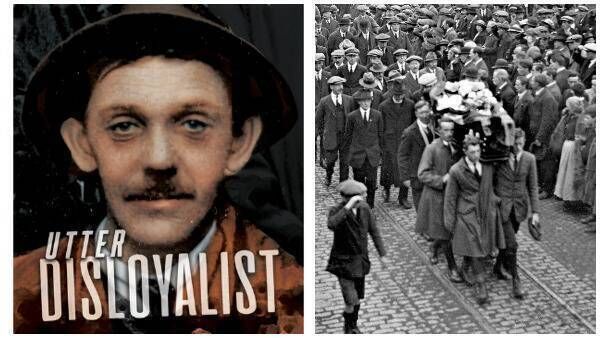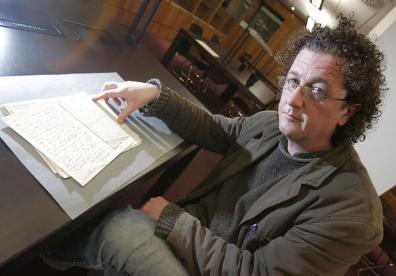In This Section
- Home
- Collections
- Atlas Resources for Schools
- Cork Fatality Register
- Mapping the Irish Revolution
- Mapping IRA Companies, July 1921-July 1922
- Mapping the Burning of Cork, 11-12 December 1920
- Martial Law, December 1920
- The IRA at War
- The Railway Workers’ Munitions Strike of 1920
- The Victory of Sinn Féin: The 1920 Local Elections
- The War of Words: Propaganda and Moral Force
- The IRA Offensive against the RIC, 1920
- De Valera’s American Tour, 1919-1920
- The British Reprisal Strategy and its Impact
- Cumann na mBan and the War of Independence
- The War Escalates, November 1920
- The War of Independence in Cork and Kerry
- The Story of 1916
- A 1916 Diary
- January 9-15 1916
- January 10-16, 1916
- January 17-23, 1916
- January 24-30, 1916
- February 1-6 1916
- February 7-14, 1916
- February 15-21, 1916
- February 22-27, 1916
- February 28-March 3, 1916
- March 6-13,1916
- March 14-20, 1916
- March 21-27 1916
- April 3-9, 1916
- April 10-16, 1916
- April 17-21,1916
- May 22-28 1916
- May 29-June 4 1916
- June 12-18 1916
- June 19-25 1916
- June 26-July 2 1916
- July 3-9 1916
- July 11-16 1916
- July 17-22 1916
- July 24-30 1916
- July 31- August 7,1916
- August 7-13 1916
- August 15-21 1916
- August 22-29 1916
- August 29-September 5 1916
- September 5-11, 1916
- September 12-18, 1916
- September 19-25, 1916
- September 26-October 2, 1916
- October 3-9, 1916
- October 10-16, 1916
- October 17-23, 1916
- October 24-31, 1916
- November 1-16, 1916
- November 7-13, 1916
- November 14-20, 1916
- November 21-27-1916
- November 28-December 4, 1916
- December 5-11, 1916
- December 12-19, 1916
- December 19-25, 1916
- December 26-January 3, 1916
- Cork's Historic Newspapers
- Feature Articles
- News and Events
- UCC's Civil War Centenary Programme
- Irish Civil War National Conference 15-18 June 2022
- Irish Civil War Fatalities Project
- Research Findings
- Explore the Fatalities Map
- Civil War Fatalities in Dublin
- Civil War Fatalities in Limerick
- Civil War Fatalities in Kerry
- Civil War Fatalities in Clare
- Civil War Fatalities in Cork
- Civil War Fatalities in the Northern Ireland
- Civil War Fatalities in Sligo
- Civil War Fatalities in Donegal
- Civil War Fatalities in Wexford
- Civil War Fatalities in Mayo
- Civil War Fatalities in Tipperary
- Military Archives National Army Fatalities Roll, 1922 – 1923
- Fatalities Index
- About the Project (home)
- The Irish Revolution (Main site)
Tadhg Barry: New book revives memory of Corkman shot exactly 100 years ago

Despite his prominence in several areas of public life in Cork, and his tragic end, Tadhg Barry has never had the profile of some of his contemporaries, writes Des O'Driscoll
That's one of the questions a new book on the native of Blarney Street in Cork seeks to answer. Written by UCC historian Donal Ó Drisceoil and published by Mercier Press, Utter Disloyalist: Tadhg Barry and the Irish Revolution traces the incredible life of a figure who was shot dead 100 years ago by a teenage soldier at Ballykinlar internment camp in Co Down.
The centenary of Barry's death is being marked in Cork on Monday, November 15, with several events, including a graveside oration at St Finbarr’s cemetery by city Lord Mayor Colm Kelleher, and a tree-planting ceremony at the North Monastery school, his alma mater.
As well as his left-leaning republicanism, Barry was a well-known figure in numerous other aspects of Cork life in the early part of the century, including trade union activism, and as an alderman on the city's corporation. He also had a big hand in organising the local GAA, trained the first camogie team in the city, and wrote the first ever rulebook for hurling.

The circumstances of the 41-year-old's death were put together by Ó Drisceoil through a combination of eyewitness accounts, and trawls through British military archives. It seems that Barry – in his third period of internment without trial – had been waving goodbye to some comrades who were being paroled, and had been slow to obey an order to move away from the perimeter fence.
A jittery 18-year-old private fired one shot that pierced Barry's heart. It was a killing made all the more tragic as it occurred during a truce, and came just a few weeks before the treaty and the release of remaining IRA prisoners.
On its journey south, Barry's funeral cortege brought an estimated 250,000 people to the streets of Dublin, while Cork came to a similar standstill as his body was carried through his native city. Among the mourners in the capital was Michael Collins, home during a break at the treaty negotiations.
So why has Barry had such a low profile in comparison to some of his contemporaries? “Basically it was a matter of timing,” explains Ó Drisceoil. “A few weeks after his death, the Anglo-Irish treaty was signed, and all the focus was on that. Soon after, the Civil War erupted and his name just got somewhat lost in the smoke.”
- Utter Disloyalist: Tadhg Barry and the Irish Revolution, by Donal Ó Drisceoil, published by Mercier Press
First Published in the Irish Examiner on 12 November 2021
